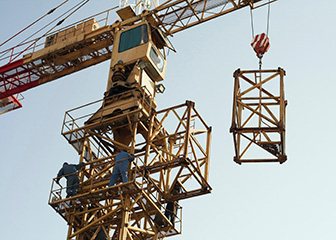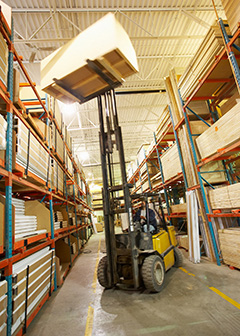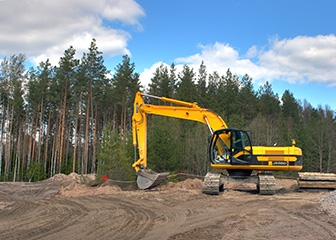What Material Moving Machine Operators Do
About this section

Crane and tower operators are commonly employed in construction and water transportation.
Material moving machine operators use machinery to transport various objects. Some operators move construction materials around building sites or earth around a mine. Others move goods around a warehouse or onto and off of container ships.
Duties
Material moving machine operators typically do the following:
- Control equipment with levers, wheels, or foot pedals
- Move material according to a plan or schedule they receive from their superiors
- Set up and inspect material moving equipment
- Make minor repairs to their equipment
- Record the material they have moved and where they moved it from and to
In warehouse environments, most material moving machine operators use forklifts and conveyor belts. Automated sensors and tags are increasingly used to keep track of merchandise, allowing operators to work faster.
In warehouses, operators usually work closely with hand material movers. For more information, see the profile on hand laborers and material movers.
Many operators work for underground and surface mining companies. They help to dig or expose the mine, remove the earth and rock, and extract the ore and other mined materials.
In construction, material movers remove earth to clear space for buildings. Some work on a building site for the entire length of the construction project. For example, material moving machine operators often help to construct high-rise buildings by transporting materials to workers far above ground level.
The following are types of material moving machine operators:
Industrial truck and tractor operators drive trucks and tractors that move materials around warehouses, storage yards, or worksites. These trucks, often called forklifts, have a lifting mechanism and forks, which makes them useful for moving heavy and large objects. Some industrial truck and tractor operators drive tractors that pull trailers loaded with material around factories or storage areas.
Excavating and loading machine and dragline operators use machines equipped with scoops or shovels. They dig sand, earth, or other materials and load them onto conveyors for transport elsewhere. Most of these operators work in construction or mining industries.
Dredge operators excavate waterways. They remove sand, gravel, or rock from harbors or lakes to help prevent erosion and improve trade. Removing these materials helps maintain navigable waterways and allows larger ships to use more ports. Dredging is also used to help restore wetlands and maintain beaches.
Underground mining loading machine operators load coal, ore, and other rocks onto shuttles, mine cars, or conveyors for transport from a mine to the surface. These workers generally work underground in mines. They may use power shovels, hoisting engines equipped with scrapers or scoops, and automatic gathering arms that move materials onto a conveyor.
Crane and tower operators use tower and cable equipment to lift and move materials, machinery, or other heavy objects. Operators extend and retract horizontal arms and lower and raise hooks attached to cables at the end of their crane or tower. Operators are usually guided by other workers on the ground using hand signals or a radio. Most crane and tower operators work at construction sites or major ports, where they load and unload cargo. Some also work in iron and steel mills.
Hoist and winch operators, also called derrick operators or hydraulic boom operators, control the movement of platforms, cables, and cages that transport workers or materials for industrial operations, such as constructing a high-rise building. Many of these operators raise platforms up far above the ground. Most work in manufacturing or construction industries. For more information about rig derrick equipment workers, see the profile on oil and gas workers.
Conveyor operators and tenders control conveyor systems that move materials on an automatic belt. They move materials to and from places such as building sites, storage areas, and vehicles.










